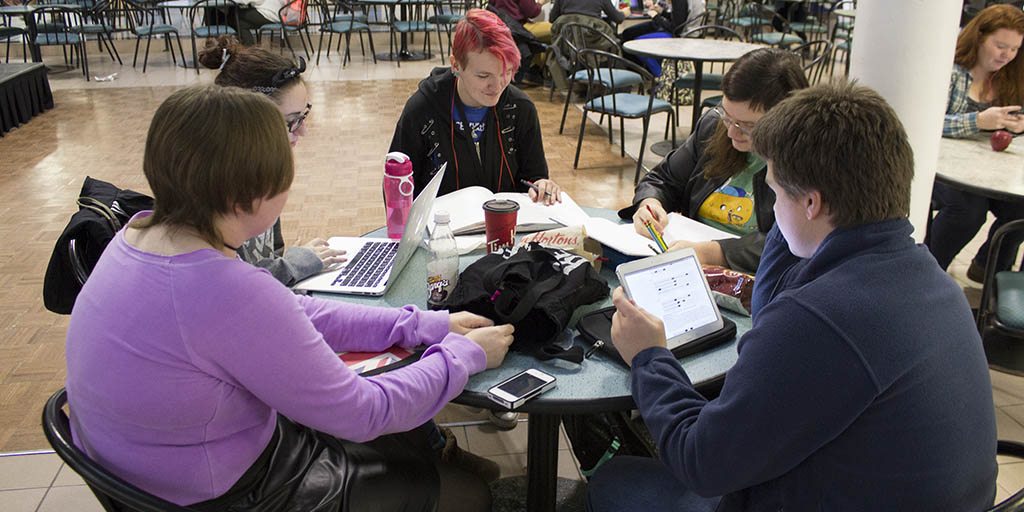Is a fall reading week necessary for Fanshawe?
 CREDIT: KERRA SEAY
CREDIT: KERRA SEAYThese students appear to be swamped in work, but would an extra reading week truly ease the burden?
For many Fanshawe students, the beginning of November can be both an exciting and stressful time. Around this time, many students may find themselves wishing they had a break from it all – some free time dedicated to catching up with family and friends or simply relaxing. The idea of a fall reading break is quite enticing to stressed students with full workloads.
While Western adopted a two-day fall study break starting in 2012, Fanshawe students continue to go without a longer break mid-semester. A break could improve the mental health of students.
Music industry arts student Lliam Buckley sees the value in adding extra days to de-stress.
“I’m lucky enough to be living in the same town as my family but there are many students who aren’t as fortunate. It can make all the stress even worse when you can’t connect with those you care about that often. A week-long break would give students a chance to visit friends, family and significant others, allowing them to emotionally recharge,” he said.
The idea appears sound, so why hasn’t it happened before? Senior vice president, academic services Gary Lima said that the option has been considered in the last few years. Many different semester models were proposed, including one that would see a break every seven weeks. These models looked at the bigger picture, and that picture didn’t end up having any room for a fall reading week with the way things stood.
“We tried to make it the most conducive to student success, that we could deliver the academic programming that needed to be delivered,” Lima said.
Another point against a fall reading week is that those extra days off would have to come from somewhere – meaning school would have to start earlier in the year or end later in December. Either of these options would be bad news for students that don’t live in London.
“We have a lot of international students and a lot of students from out of town that make Christmas plans. It just got too messy to squeeze it in there for the sake of squeezing it in. We just didn’t think it was the right thing to do for students,” Lima said.
While scheduling around everyone’s needs makes adding in extra break days a difficult task, a fall break could be useful for some programs, providing students with time to catch up with a more rigorous workload.
“We have all projects due all in one week. We need a chance just to relax but also to use that week to perfect our assignments,” said fashion merchandising student Jasmine Smith.
Lima recognizes this challenge, and offered a solution rather than giving students more break days. “We have an end-place that we have to get to, whether it’s a one-year or two-year diploma. But a whole lot more important than getting socalled dedicated days off is faculty that really balances the concerns of students and knows how to manage the workload.”
Because Fanshawe’s programs are so varied and may include work experience shifts as part of their education, a program-wide break would be too complex to organize. The key to reducing stress over workload seems to be up to teachers and program co-ordinators.
“I know I’ve been through a semester where I’ve had teachers that were just awesome and understood. They knew when they could give a lot of assignments and when maybe to give a couple weeks of less pressure. It all comes to the concerns and relationship between the faculty and students,” Lima said.
Any students feeling stressed out should look into Fanshawe’s mental wellness resources. Counselling and Accessibility Services can offer academic advice as well as personal counselling. Other sources such as Fanshawe’s iCopeU website can help improve the mental wellbeing of students.














